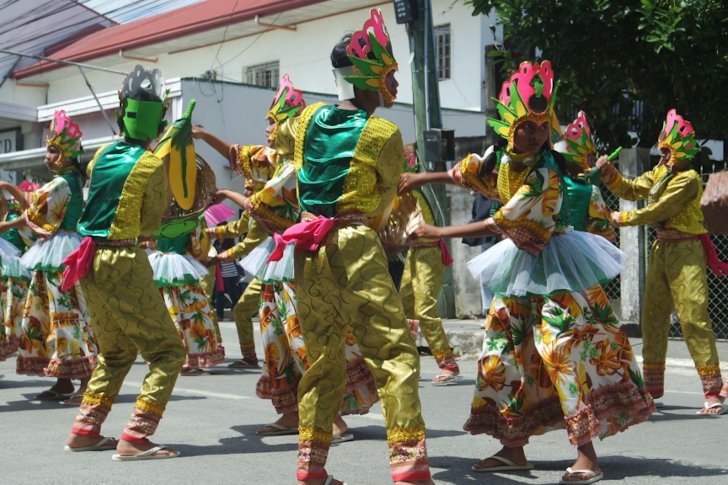Bongabong is a municipality in the Philippine province of Oriental Mindoro. Even though it was officially established as a municipality only in 1927, the history of the settlement is much longer. The first Europeans to arrive in the area were Jesuits from Najuan, another settlement on the island of Mindoro. They established a church dedicated to Saint Joseph near the Bongabong River in 1638. In the subsequent years, the Jesuits left, but the Augustinian Recollects arrived in their stead. The present-day Saint Joseph Parish Church was erected in 1938.
The Sulyog Festival originated as the annual celebration of Bongabong’s patron saint. However, over the years it has also become a harvest thanksgiving festival and a cultural celebration while still retaining its religious aspect. The name of the festival is a portmanteau of the Mangyan word suli (banana) and the Tagalog word niyog (coconut), emphasizing its agricultural aspect since these two crops are the main agricultural products of Bongabong.
The feast day of Saint Joseph is celebrated on March 19, but the festivities in Bongabong typically start earlier. Novena prayers and masses begin nine days before the festival, on March 10, and the biggest festivities (the grand procession, the fluvial parade, and street dancing) take place on March 18. The fluvial parade is a Filipino Catholic tradition where an image of a patron saint would be carried by devotees in bedecked boats along the river, while spectators ashore wave their handkerchiefs and offer prayers.
The secular activities during the festival are coordinated by the municipal government. They usually last for several days, culminating on March 19, which is typically declared as a non-working day in Bongabong. The festivities typically include talent contests, variety shows, a street dance competition between students from various local schools, a trade fair, a band exhibition, a pageant where the festival Queen is chosen, and more.
The highlight of the Sulyog Festival is the annual street parade celebrating the town’s agricultural heritage. It is a colorful and vibrant performance where several dozen participants portray the harvesting of coconuts and bananas, the extraction of copra, the assorting of bananas for sale, and offering coconuts and bananas to the patron saint of Bongabong. The bright costumes, props, and dance moves make the parade a sight not to be missed.
The Sulyog Festival is a breathtaking display of Bongabong’s culture, traditions, and heritage that brings the community together and attracts tourists from other parts of the country. It is considered a must-see for everyone visiting Mindoro. The festival was on hiatus from 2020 to 2022 due to the COVID-19 pandemic, but it was revived in 2023 in all its former glory.

Photo: Mindoro Travel Guide




